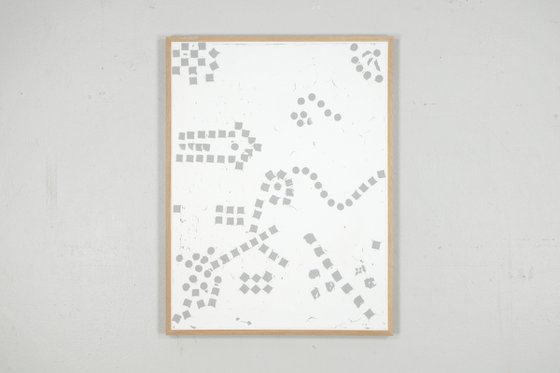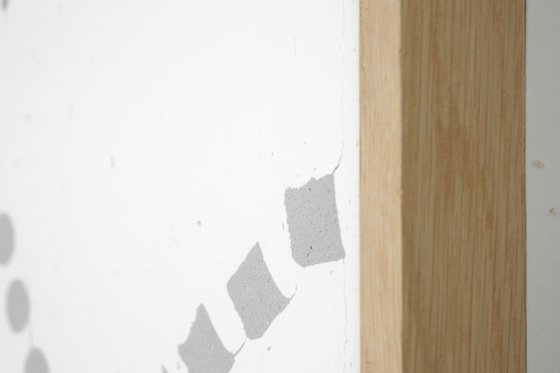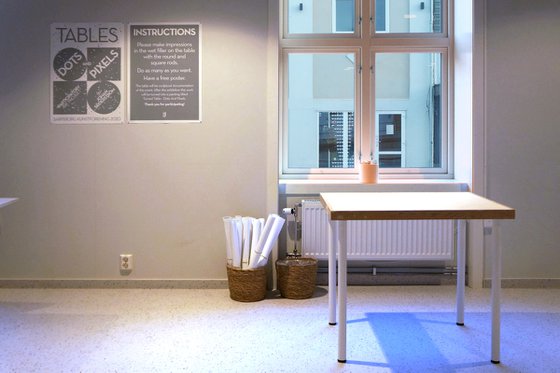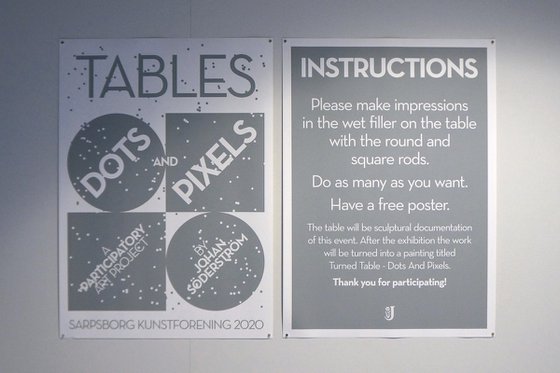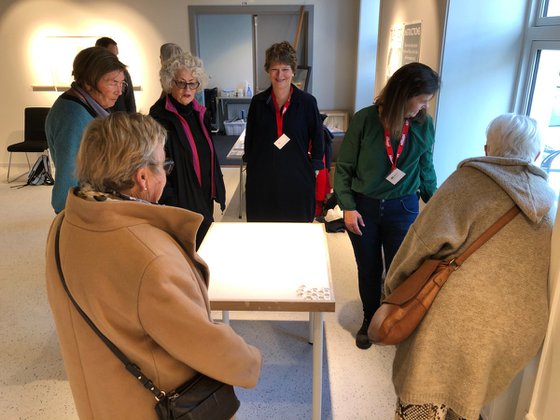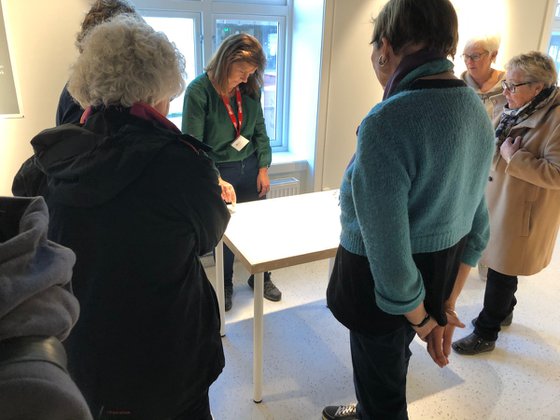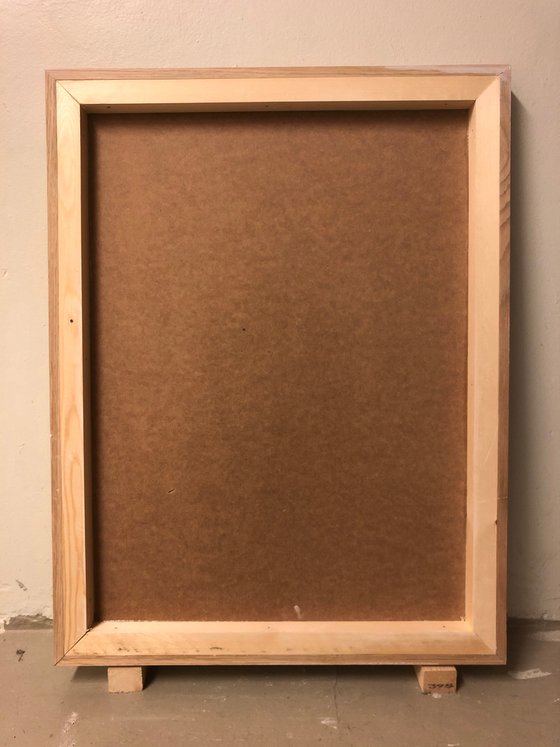- By medium
- By subject
- By budget
- Sales
- Gift cards
- Discover all art
- Artists
- Editors’ picks
- Ideas
Original artwork description:
64x84 cm | Filler, oak frame
This work was produced during the participatory art project "TABLES Dots And Pixels" at the opening of my exhibition Tablet in Sarpsborg Kunstforening. Participants were asked to make imprints with small square or round rods in the wet filler in a frame with mounted legs, like a table. During the exhibition period, the table became sculptural documentation of the event, and afterwards, I disassembled the legs and finished the work in my studio.
The square and round imprints refer to the smallest components of digital and physical image reproduction - the pixel and the raster point. An image can be seen as a semantic statement because to perceive it, we must interpret and understand the various elements of the image, and place them in their appropriate linguistic categories. For the brain, there is thus no fundamental difference between text and image. It is often said that reading creates inner images, but it is also possible to say that looking create an internal text or an inner semantic understanding.
We perceive the letters and phonemes as the smallest elements in writing and spoken language. But the essence of all language as such is the distinction, the ability to distinguish one from the other. It is the smallest information unit - in image reproduction; the pixel and raster point - in computer technology; the byte, expressed in the binary number system as one or zero. It is the fundamental function of language. The interesting thing here is that the division itself - the boundary, is a purely semantic construction. When it is expressed in materiality - which it must to communicate - the border is always blurred. In physical reality, one can never be wholly separated from the other, it is only within the realm of language that this is possible.
The subject exists within such a semantic reality. To be able to perceive oneself as an independent entity, which can make conscious and free choices, the subject views itself with a semantic gaze, i.e. that there is an unambiguous boundary between the self and the world around it. The subject, the self-conscious individual, is seen as the smallest component of society in a liberal, Western understanding. But just as the purity of language always is distorted and polluted by encountering the material world, so the atomized view of society, with the inviolability of the individual as its foundation, is not unequivocally feasible in practice. People intersect with each other, and one's freedom can never be separated entirely from the other's dependence.
Materials used:
Filler (coarse and fine) in oak frame
Tags:
#abstract #painting #minimalism #filler #oak frame#297 Turned Table - Dots And Pixels (2020) Painting
by Johan Söderström
1 Artist Reviews
£1,035.84
- Painting on Panel / Board / MDF
- One of a kind artwork
- Size: 64 x 84 x 5cm (framed)
- Framed and ready to hang
- Signed on the back
- Style: Geometric
- Subject: Abstract and non-figurative
Loading
Original artwork description
64x84 cm | Filler, oak frame
This work was produced during the participatory art project "TABLES Dots And Pixels" at the opening of my exhibition Tablet in Sarpsborg Kunstforening. Participants were asked to make imprints with small square or round rods in the wet filler in a frame with mounted legs, like a table. During the exhibition period, the table became sculptural documentation of the event, and afterwards, I disassembled the legs and finished the work in my studio.
The square and round imprints refer to the smallest components of digital and physical image reproduction - the pixel and the raster point. An image can be seen as a semantic statement because to perceive it, we must interpret and understand the various elements of the image, and place them in their appropriate linguistic categories. For the brain, there is thus no fundamental difference between text and image. It is often said that reading creates inner images, but it is also possible to say that looking create an internal text or an inner semantic understanding.
We perceive the letters and phonemes as the smallest elements in writing and spoken language. But the essence of all language as such is the distinction, the ability to distinguish one from the other. It is the smallest information unit - in image reproduction; the pixel and raster point - in computer technology; the byte, expressed in the binary number system as one or zero. It is the fundamental function of language. The interesting thing here is that the division itself - the boundary, is a purely semantic construction. When it is expressed in materiality - which it must to communicate - the border is always blurred. In physical reality, one can never be wholly separated from the other, it is only within the realm of language that this is possible.
The subject exists within such a semantic reality. To be able to perceive oneself as an independent entity, which can make conscious and free choices, the subject views itself with a semantic gaze, i.e. that there is an unambiguous boundary between the self and the world around it. The subject, the self-conscious individual, is seen as the smallest component of society in a liberal, Western understanding. But just as the purity of language always is distorted and polluted by encountering the material world, so the atomized view of society, with the inviolability of the individual as its foundation, is not unequivocally feasible in practice. People intersect with each other, and one's freedom can never be separated entirely from the other's dependence.
Materials used:
Filler (coarse and fine) in oak frame
Tags:
#abstract #painting #minimalism #filler #oak frame14 day money back guaranteeLearn more
